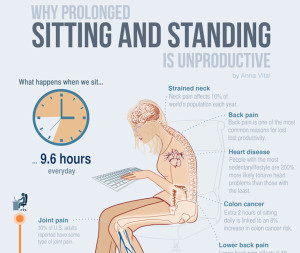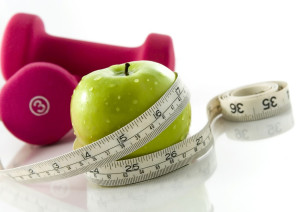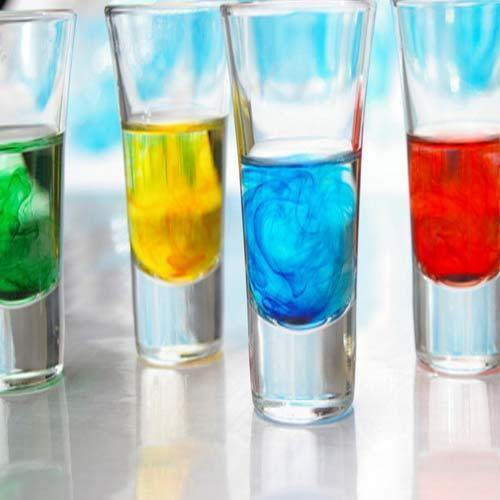
When we go to the supermarket, there is a decision we have to make between purchasing regular or organic fruits, vegetables, meats, and other produce. Although some people are unclear about what the difference between the two options are, the sales for organic produce has been increasing in recent years as people learn more about it. According to the executive director of Organic Trade Association, Katherine DiMatteo, “We’ve had a strong 20%-a-year growth rate since 1990” (WebMD). So why are people becoming more enticed to buy organic? Well, before there was a difference between regular and organic, the consumer couldn’t be sure about the quality of the product. Now the U.S. Department of Agriculture set national regulations for the way in which organic food is grown, handled, and processed. According to the U.S. Department of Agriculture “To meet the set standards, organic crops must be produced without conventional pesticides (including herbicides), synthetic fertilizers, sewage sludge, bioengineering, or ionizing radiation. Organically raised animals must be given organic feed and kept free of growth hormones and antibiotics.” (WebMD) Due to the strict regulations it is believed by many people that organic foods taste better, are more nutritional, are safer to consume, and are better for the environment.
Advocates of organic food tend to believe that organic food tastes better. Although this claim may just be a matter of opinion, organic food is typically sold locally and is usually fresher than produce at stores that have been transported far distances. As a result, the organic produce may have more flavor. Another claim is that organic produce has more nutritional value in the levels of vitamins, minerals, and antioxidants. One study shows that organic foods may contain at least higher levels of antioxidants. Research conducted by Newcastle University found that “concentrations of antioxidants such as polyphenolics that were 18- to 69-percent higher in organic food. Eating organic fruit, vegetables and cereals provide consumers 20- to 40-percent more antioxidants, which would be equivalent to eating between one to two extra servings of fruit and vegetables a day”(Zuraw). In fact, multiple studies have been done on specific organic foods such as milk and tomatoes, which have both been proven to have more antioxidants, vitamins, and other beneficial nutrients. This makes these two products healthier when bought in the organic form. “This may be due to the fact that foreign chemicals are not negatively interacting with the different vitamins, minerals, and organic compounds that are so essential for the positive impact of fruits and vegetables” (Oranic Facts). So purchasing organic produce can be more nutritional in some cases.
Another benefit of organic produce is that people believe it is healthier to consume because of the way it is grown, handled, and processed. In the case of fruits and vegetables, conventional farmers use harsh pesticides in order to protect the crops from the environment. Organic farmers instead make sure the environment is safe by using insect traps or careful crop selection, so they don’t have to use many chemicals on their produce. According to the USDA, “A large-scale study done by the Consumers Union. Researchers looked at data from more than 94,000 food samples and 20 different crops. They found that organically grown crops consistently had about one-third as many pesticide residues as the conventionally grown versions” (WebMD). Many people like the fact that organic has so little pesticide residue, because studies have shown that pesticides can have potentially harmful effects. A study by scientists at Harvard University found ”Pesticides have been linked to a wide range of human health hazards, ranging from short-term impacts such as headaches and nausea to chronic impacts like cancer, reproductive harm, and endocrine disruption” (TAC). This is because pesticides are composed of unnatural chemicals that don’t interact well with the human body, so when a person consumes or is exposed to them often it is not surprising that it could cause health issues.
When it comes to organic produce such as meats and dairy, “regulations ban or severely restrict the use of food additives, processing aids (substances used during processing, but not added directly to food) and fortifying agents commonly used in nonorganic foods, including preservatives, artificial sweeteners, colorings and flavorings, and monosodium glutamate” (Mayo Clinic). With non-organic produce, the consumer doesn’t always know what is put into their food. According to a study “Organic meats like chicken and pork are less likely to harbor “superbugs”—that is, bacteria that are immune to several types of antibiotics, making it more difficult treat infections in both animals and people” (Radcliffe). This is why people might be more drawn to organic, since it seems to be a cleaner and more natural version of produce.
Lastly, organic produce also benefits the health of the environment. Since conventional farmers use harsh chemicals such as fertilizer or pesticide on their crops, it accumulates in the soil, air, and water systems. “Pesticide use can damage agricultural land by harming beneficial insect species, soil microorganisms, and worms which naturally limit pest populations and maintain soil health; Weakening plant root systems and immune systems; reducing concentrations of essential plant nutrients in the soil such nitrogen and phosphorouss” (TAC). These issues can have long term negative impacts on the environment and society. Since organic famers do not use the harsh chemicals on their produce, they are not contributing to the pollution that some non-organic farmers do.
Although one of the biggest concerns with buying organic produce is the high costs, it seems that there are a lot of benefits to buying it. It is a matter of opinion whether organic is worth paying more for, but the fact that organic food has been shown to be better tasting, more nutritious, safer to consumer, and better for the environment seems like it is worth the cost. So, next time you are in a dilemma whether or not to buy organic, remember that it is typically the safest, cleanest form of food you can get and maybe that will help you choose.
(Picture 1)
 Some main benefits of biodiesel:
Some main benefits of biodiesel:







 When looking at Muscle & Fitness’s “
When looking at Muscle & Fitness’s “





 Those against Ferber’s views argue that he is only a pediatrician with no psychological training or background in the field. The child’s brain is developing during that time and learning to trust, so any traumatic experiences may hinder their development. Other critics argue that adults who suffer from insomnia were trained to sleep through the Ferber
Those against Ferber’s views argue that he is only a pediatrician with no psychological training or background in the field. The child’s brain is developing during that time and learning to trust, so any traumatic experiences may hinder their development. Other critics argue that adults who suffer from insomnia were trained to sleep through the Ferber  Rats were tested to understood the human mind and the importance of nurturing mothers. Rats with low nurturing mothers in the first week following their birth experienced anxiety as they aged in contrast to the newborn rats with nurturing mothers that did not experience anxiety when faced with new situations. The same has been found with humans. If a child’s needs are met by the caregiver and they are not left in distress, they will be more confident in their choices and become more independent rather than the
Rats were tested to understood the human mind and the importance of nurturing mothers. Rats with low nurturing mothers in the first week following their birth experienced anxiety as they aged in contrast to the newborn rats with nurturing mothers that did not experience anxiety when faced with new situations. The same has been found with humans. If a child’s needs are met by the caregiver and they are not left in distress, they will be more confident in their choices and become more independent rather than the 
 bruxism cases are a result of excessive amounts of stress and sleep anxiety. Grinding teeth doesn’t only happen subconsciously during sleep; sometimes during intense concentration or during a stressful moment, a person will clench their jaw tightly for an extended period of time. Other ways in which one will clench their jaw repeatedly, such as chewing gum, allows the jaw to become accustomed to clamping down on the teeth vigorously, promoting the grinding at night. A myriad of other possible third variables can cause grinding your teeth at night such as: alcohol consumption, smoking, and using recreational drugs such as ecstasy and cocaine.
bruxism cases are a result of excessive amounts of stress and sleep anxiety. Grinding teeth doesn’t only happen subconsciously during sleep; sometimes during intense concentration or during a stressful moment, a person will clench their jaw tightly for an extended period of time. Other ways in which one will clench their jaw repeatedly, such as chewing gum, allows the jaw to become accustomed to clamping down on the teeth vigorously, promoting the grinding at night. A myriad of other possible third variables can cause grinding your teeth at night such as: alcohol consumption, smoking, and using recreational drugs such as ecstasy and cocaine. are many ways to have it treated; however, only a few methods have proven to successfully rid
are many ways to have it treated; however, only a few methods have proven to successfully rid



 If you don’t have trust issues, you will soon. As millennials (thats you) push western society towards healthier, organic foods, many companies are starting to publish nutrition information online and in-store. For example, my favorite place to eat in State College, Chipotle, has a
If you don’t have trust issues, you will soon. As millennials (thats you) push western society towards healthier, organic foods, many companies are starting to publish nutrition information online and in-store. For example, my favorite place to eat in State College, Chipotle, has a 
 In addition to stricter FDA guidelines, companies like Chipotle or Starbucks should implement better education programs for new hires that make portioning less variable. Going one step further, companies need to
In addition to stricter FDA guidelines, companies like Chipotle or Starbucks should implement better education programs for new hires that make portioning less variable. Going one step further, companies need to 



 razine. If you break down this two ingredients we can see that something isn’t adding up. Mountain dew contains
razine. If you break down this two ingredients we can see that something isn’t adding up. Mountain dew contains  and come out in your urine. Very little is actually metabolized by our bodies.
and come out in your urine. Very little is actually metabolized by our bodies. 


